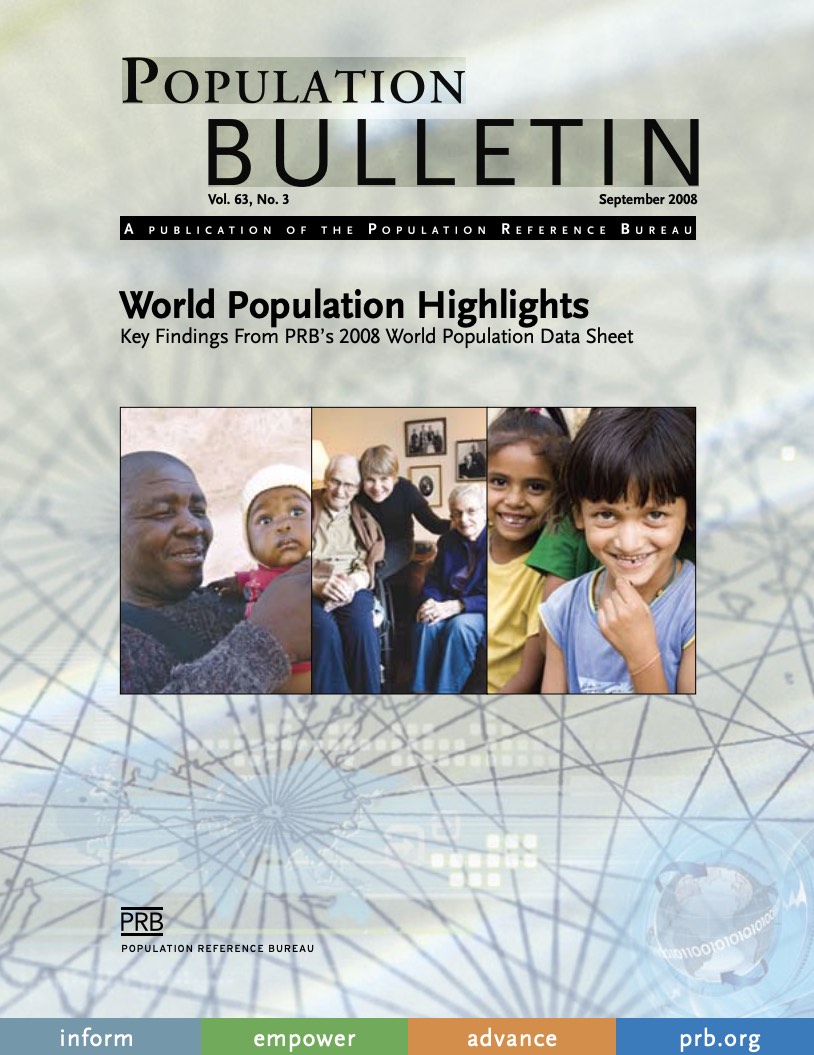
World Population Highlights: Key Findings From PRB's 2008 World Population Data Sheet
Product: Population Bulletin, vol. 63, no.3
Author: PRB
Date: August 19, 2008
(September 2008) In mid-2008, world population stood at 6.7 billion, up from 6.0 billion in 1999. The next milestone, 7 billion, will likely be passed in 2011 or 2012.
During the 20th century, nearly 90 percent of population growth took place in countries classified as less developed (LDCs) by the United Nations—all countries in Africa, Asia (except Japan), Latin America and the Caribbean, and Oceania (except Australia and New Zealand). This remarkable development resulted from an unprecedented decline in death rates in LDCs brought about by the spread of public health measures, health care, and disease prevention, particularly after the end of World War II in 1945. These improvements evolved over centuries in the more developed countries (MDCs), but the LDCs were able to benefit from them virtually overnight.
The imbalance in population growth seen over the last century will only intensify in the years to come. Between 2008 and 2050, virtually all population growth will take place in the LDCs. Overall, the small amount of population growth projected for MDCs will be largely accounted for by the United States and Canada. But most of that growth will likely be due to immigration from LDCs. While the LDCs are projected to increase from 5.5 billion in 2008 to 8.1 billion in 2050, the MDCs are projected to grow from 1.2 billion to just 1.3 billion.
There are vast differences in age structure between the MDCs and LDCs. The large number of young people in the LDCs, the “parents of tomorrow,” ensures substantial population growth. Exactly the opposite is true in the MDCs.

 ">
">